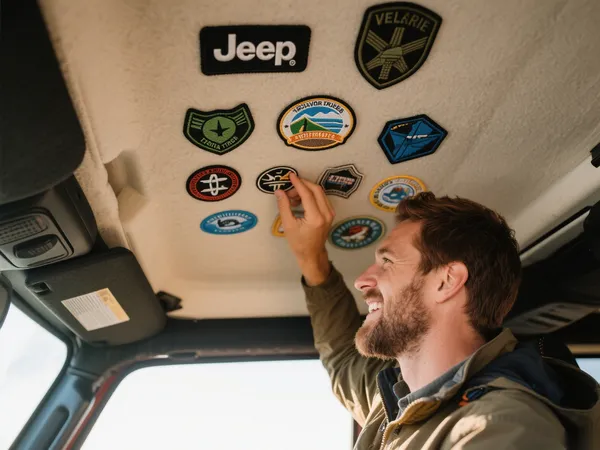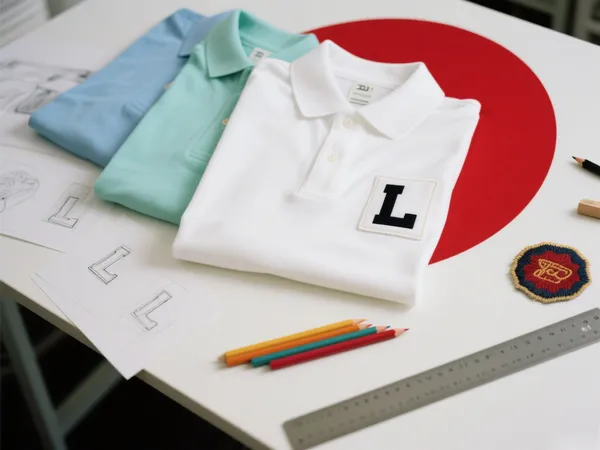Die Motorradkultur ist reich an Tradition, Symbolik und einem tiefen Zugehörigkeitsgefühl. Eines der bekanntesten und kraftvollsten Symbole dieser Kultur ist das Biker-Club-Aufnäher. Diese ikonischen Embleme, die auf Lederwesten oder -jacken gestickt sind, dienen nicht nur der Dekoration – sie tragen Bedeutung, repräsentieren Loyalität und erzählen oft die Geschichte der Reise eines Fahrers.
In diesem Blog werden wir untersuchen, was Biker-Club-Aufnäher sind, ihre historische und kulturelle Bedeutung, wie sie sich von allgemeinen unterscheiden benutzerdefinierte Motorrad-Patches, und was beim Entwerfen oder Tragen zu beachten ist. Egal, ob Sie ein erfahrener Fahrer oder ein Neuling in Motorradclubs sind, das Verständnis der Welt der gestickte Biker-Patches wird Ihre Wertschätzung dieser altehrwürdigen Tradition vertiefen.

Die Ursprünge und die Bedeutung von Biker-Club-Aufnähern
Die Verwendung von Patches in Motorradclubs geht auf die Zeit nach dem Zweiten Weltkrieg zurück, als Veteranen nach Hause zurückkehrten und Kameradschaft, Adrenalin und Abenteuer auf zwei Rädern suchten. Clubs wie die Hells Angels, Bandidos und Outlaws prägten die Biker-Identität, die wir heute kennen, und Patches spielten dabei eine zentrale Rolle.
Biker-Club-Aufnäher bestehen typischerweise aus einem „dreiteiligen“ Patch:
- Der obere Wippe zeigt den Namen des Clubs an.
- Der Mittelfleck enthält das Logo oder Abzeichen des Clubs.
- Der untere Wippe gibt den Ort oder das Gebiet an, in dem der Club tätig ist.
Einige Jacken können auch kleinere Aufnäher für den Rang oder die Leistungen des Reiters enthalten oder Slogans wie „1%“ – ein Begriff, der früher verwendet wurde, um den Status eines Gesetzlosen anzuzeigen.
Diese Patches symbolisieren Einheit, Werte und Brüderlichkeit. Das unbefugte Tragen eines Patches, insbesondere eines dreiteiligen Designs, gilt als höchst respektlos und kann zu ernsthaften Konflikten mit etablierten Clubs führen. Deshalb ist es sowohl für unabhängige Fahrer als auch für Mitglieder organisierter Clubs wichtig, die Patch-Etikette zu verstehen.

Arten von Motorrad- und Biker-Patches
Über die traditionellen Club-Patches hinaus gibt es eine große Welt von benutzerdefinierte Motorrad-Patches Und gestickte Biker-Patches die es den Fahrern ermöglichen, Persönlichkeit, Humor, Überzeugungen oder Zugehörigkeit zum Ausdruck zu bringen, ohne sich unbedingt einem bestimmten Club anschließen zu müssen.
1. Benutzerdefinierte Motorrad-Patches
Diese Aufnäher werden oft für Motorradfahrergruppen, Veranstaltungen, Rallyes oder den individuellen Gebrauch hergestellt. Sie können alles Mögliche zeigen, von Totenköpfen und Flammen bis hin zu persönlichen Slogans oder Straßennamen. Individuelle Aufnäher ermöglichen es unabhängigen Motorradfahrern oder Freizeitclubs, ein Gefühl der Identität zu entwickeln, ohne der strengen Hierarchie von Outlaw- oder traditionellen MCs (Motorradclubs) unterworfen zu sein.
2. Gestickte Biker-Patches
Stickereien sind aufgrund ihrer robusten, hochwertigen Optik nach wie vor der beliebteste Stil. Diese Aufnäher sind wind-, regen- und staubfest. Aufwendige Stickereien verleihen dem Aufnäher Struktur und Charakter und sorgen dafür, dass er auf der Autobahn oder vor der Kneipe auffällt.
3. Zum Aufbügeln oder Aufnähen
Je nach Wunsch und gewünschter Haltbarkeit des Patches können Sie sich für eine Variante zum Aufbügeln oder Aufnähen entscheiden. Die meisten Club-Patches werden für Haltbarkeit und Authentizität direkt auf Leder genäht.

Regeln und Respekt in der Biker-Patch-Kultur
Motorrad-Patches sind mehr als nur coole Accessoires – sie sind Teil einer komplexen Kultur mit ungeschriebenen Regeln. Hier sind ein paar Dinge, die Sie beachten sollten:
- Tragen Sie niemals einen dreiteiligen Aufnäher, es sei denn, Sie sind Mitglied in einem seriösen Club. Die Nachahmung dieses Stils kann als respektlos oder sogar bedrohlich empfunden werden.
- Vermeiden Sie es, Territorium zu beanspruchen. Das Anbringen eines Ortsnamens auf einer Rocker-Unterseite ist traditionell genehmigten Clubs vorbehalten. Wenn Sie keinem angehören, bleiben Sie bei neutralen Slogans oder Symbolen.
- Bitten Sie bei Bedarf um Erlaubnis. In manchen Regionen gibt es einen dominanten MC, der die Verwendung von Patches in seinem Gebiet überwacht. Es ist höflich und oft notwendig, vor der Gründung einer neuen Gruppe mit eigenem Abzeichen nachzufragen.
Durch die Achtung dieser Traditionen bleibt die Motorradkultur sicher, einheitlich und ehrenhaft.
So entwerfen Sie den perfekten individuellen Biker-Aufnäher
Wenn Sie planen, Ihre eigene benutzerdefinierter Motorrad-Patch, ob für einen Verein oder den persönlichen Gebrauch, beachten Sie Folgendes:
- Design mit Bedeutung. Denken Sie an Symbole, Farben und Formen, die Ihre Werte, Ihre Geschichte oder Ihre Fahrphilosophie repräsentieren.
- Verwenden Sie auffällige Stickereien. Es ist wichtig, dass die Flicken aus der Ferne sichtbar sind und der Abnutzung beim Fahren standhalten.
- Größe und Platzierung sind wichtig. Rückenflicken sind normalerweise groß und zentriert, während kleinere auf der Brust oder Schulter angebracht sein können.
Viele Patch-Hersteller bieten Digitalisierungsdienste an, um Ihr Kunstwerk in hochwertige gestickte Biker-Patches für starke Beanspruchung geeignet.

Abschluss
Biker-Club-Aufnäher sind nicht nur gestickte Embleme – sie sind starke Zeichen von Identität, Zugehörigkeit und Vermächtnis. Ob Sie eine Clubtradition ehren, Ihre eigene entwerfen benutzerdefinierte Motorrad-Patchesoder zeigen Sie einfach Ihre Persönlichkeit mit gestickte Biker-Patches, diese Accessoires haben in der Motorrad-Community eine große kulturelle Bedeutung.
Wenn Sie die Geschichte, Symbolik und Etikette rund um Biker-Patches verstehen, können Sie selbstbewusst und stolz fahren – und die Straße unter Ihnen und die Brüderschaft neben Ihnen ehren. Wenn Sie also das nächste Mal einen Biker mit einer mit Patches übersäten Weste sehen, denken Sie daran: Jeder Stich erzählt eine Geschichte.



